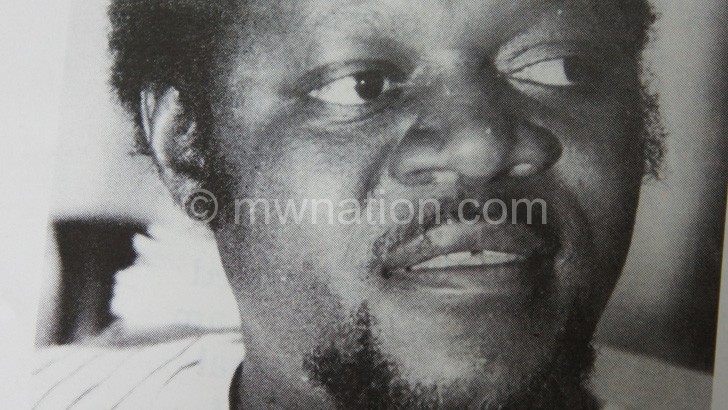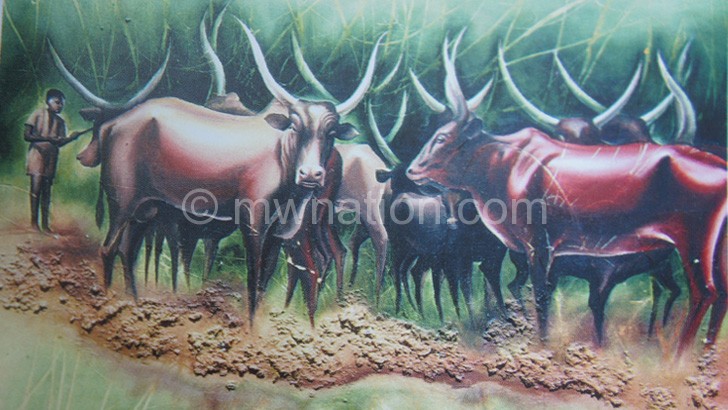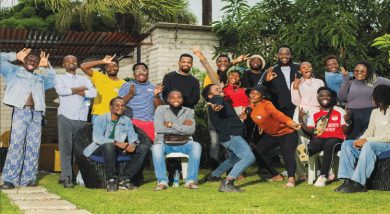Celebrating the life of Kay Chiromo
One of Malawis’ finest visual artists, Witness Kay Chiromo, might have died 22 years ago, but he still lives through his works that are displayed at different places such as La Carvena Art Gallery in Blantyre. He continues to inspire and remind many people, including tourists and arts fanatics, about his remarkable legacy.
One of Chiromo’s amazing works, which continues to hold admirers’ breath at La Carvena is his 1993 artwork Mother and Child, painted on the acrylic medium. 
Apart from doing video documentaries and book illustrations, Chiromo’s main artistic medium was oil paintings.
Sometimes, his oil paintings were made of sand, fabric or pebbles to produce a deep relief and three-dimensional effect.
Chiromo once noted that, “Africans express themselves better in three-dimensional arts.”
Mostly, Chiromo’s paintings became popular globally in the 1980s. He exhibited in different galleries across the world such as the United States, England, Canada, South Africa and Zambia.
In Malawi, his artistic legacy is still seen and appreciated in different art galleries.
Commenting on Chiromo’ artistic legacy, Leaser Kamphinda-Banda, a representative at La Carvena, said the artist’s works serve a historical purpose.
She said apart from marketing Malawian culture through various artworks, La Carvena was there to preserve history.
“As one of the earliest artists in Malawi, Chiromo’s works are kept to serve a historic purpose for the Malawi arts industry. Much has been written and said about him, but we want people, especially the younger generation, to appreciate his works.
It is imperative that as a country, we know where we are coming from and heading to in an artistic and cultural sense,” said Kamphinda-Banda.
Born in 1951, Chiromo, who was also an educator, died in a car accident in 1994. He hailed from Makoka Village in T/A Chigaru, Blantyre.
Kamphinda-Banda said to fully appreciate herself, Malawi needs to preserve her history, adding that it helps the country to deal with emerging issues with sober minds.
“Without compelling history and cultural values, a nation like Malawi can get lost amid emerging issues that have a direct impact on her people’s cultural, social and economic lives. Therefore, her citizens need to have a wall to lean against when such issues and influences arise,” she said.
Apart from Chiromo’s work, La Carvena also stocks and displays artworks of other artists which depict ancient and fallen soldiers who fought in wars that helped to liberate Malawi from the captivity of colonial rule. Other works depict how Malawians suffered due to slave trade.
Art has the power to put history in perspective for people to appreciate the past and relate with the present for them to make informed judgements pertaining to their social, economic, educational and cultural values.
Kamphinda-Banda urged parents to encourage children to cultivate a culture of reading and researching to help them learn more about their country, fallen heroes and culture so that they deal with issues intelligently.
Peter Ndalama, a visual artist at Blantyre curios market, remembers Chiromo as one of the great pillars of Malawi’s carving industry.
He said: “I remember very well that Chiromo was among the first Malawian arts students to learn wood carving under Jibu Sani and Akamitondo at the KuNgoni Centre of Culture and Art.
“When I read history, I also appreciate that around 1986 he was recognised by Pratt Institute, a private art college in New York. His achievements were enough to inspire most of artists in Malawi, including me.”
Professionally, Chiromo taught at Chancellor College, a constituent college of the University of Malawi (Unima), where he served as a senior lecturer and head of the Fine and Performing Arts Department.
Chiromo may have died in 1994, but his legacy can also be seen and appreciated through a Unesco-sponsored book collection of his work, which was published posthumously.
There was also an annual national literary competition, the ‘Kay Chiromo Literary Competition’ that was named in his honour from 1995 to 1999.





